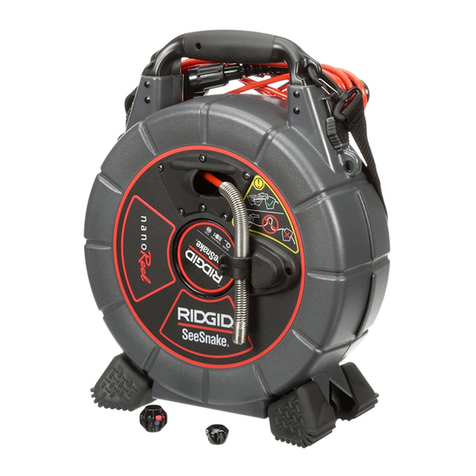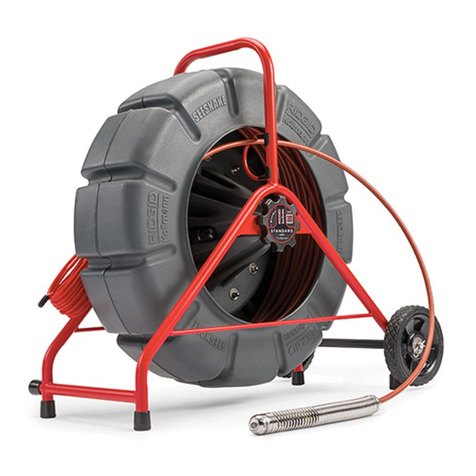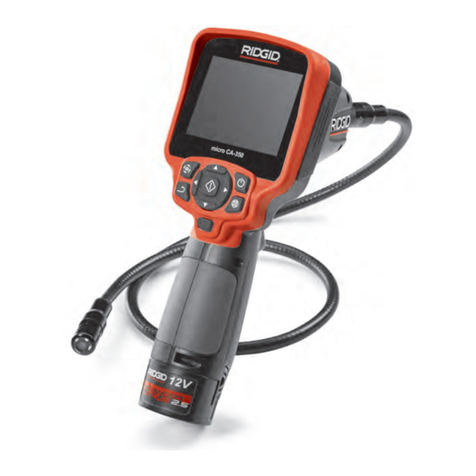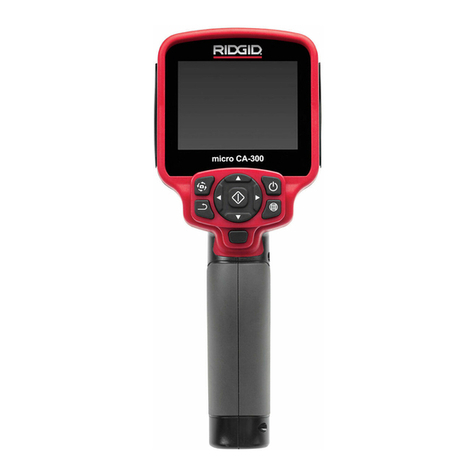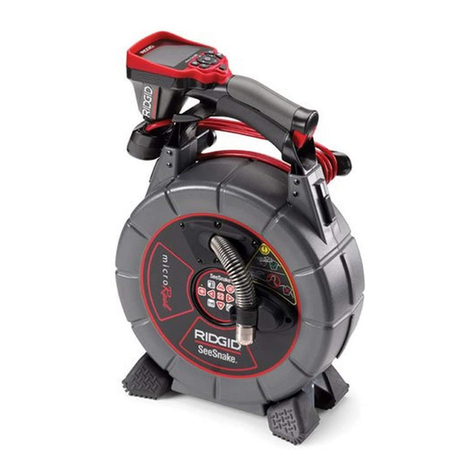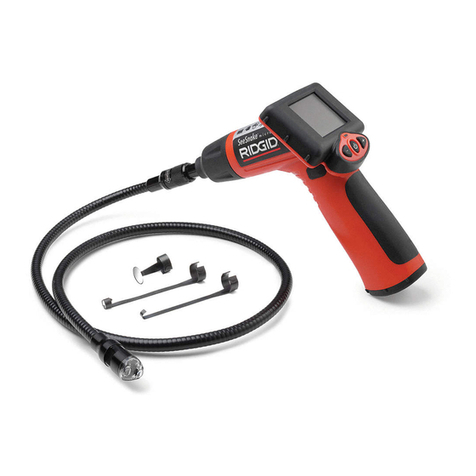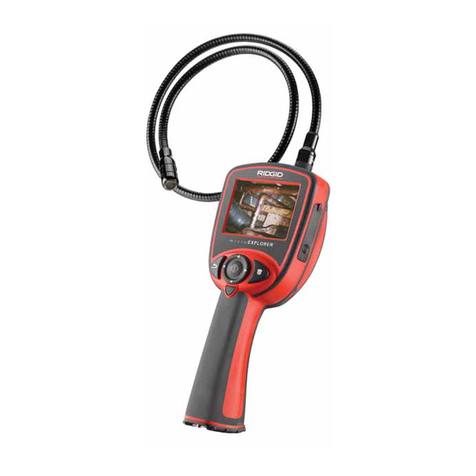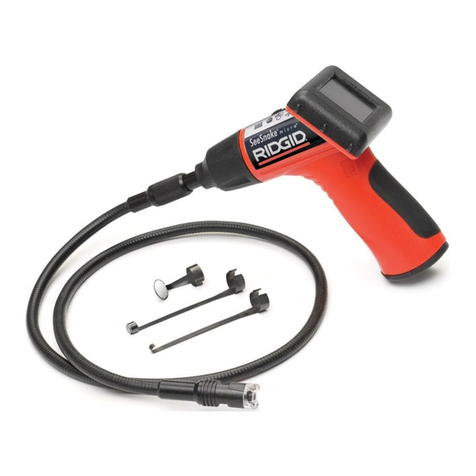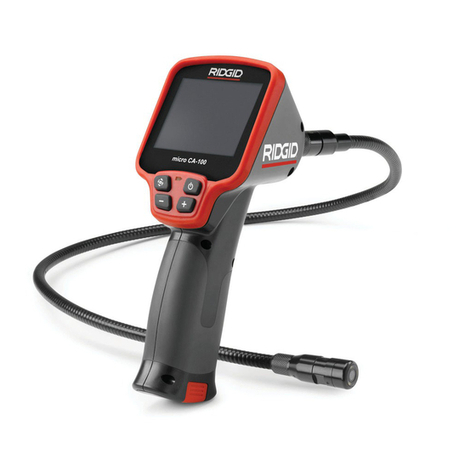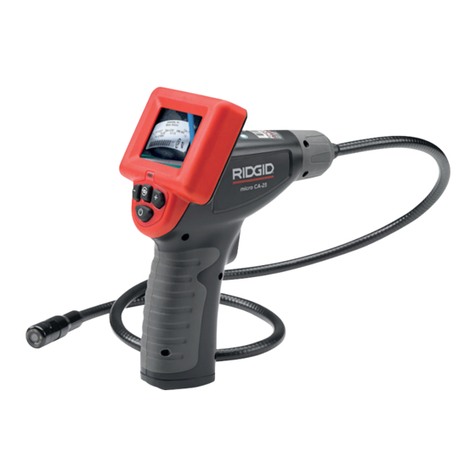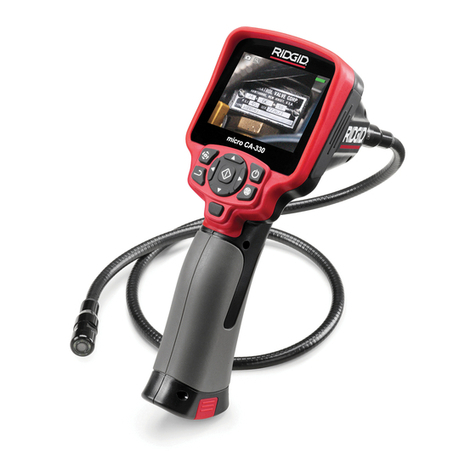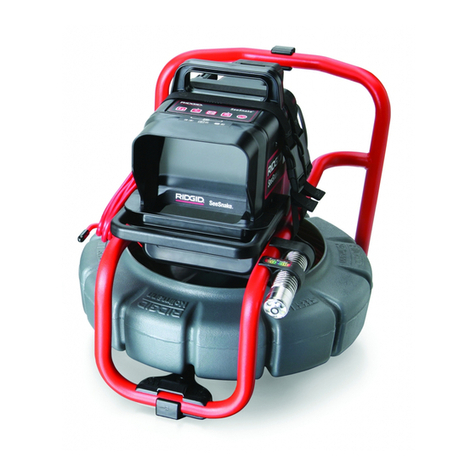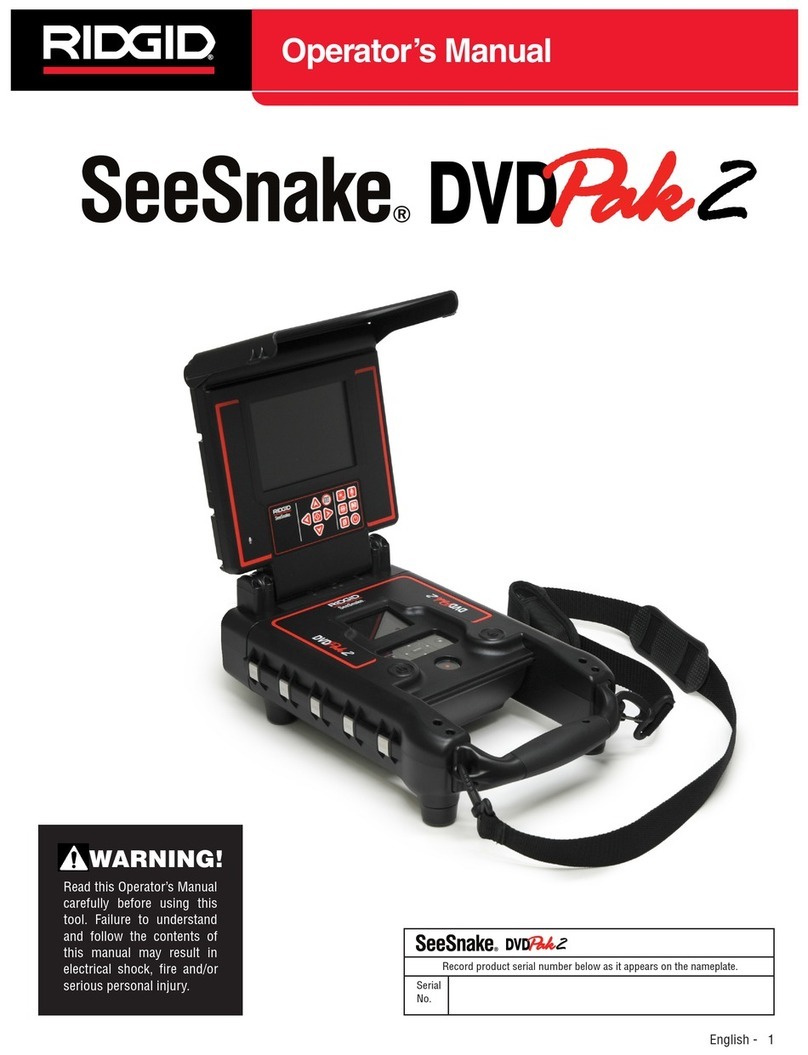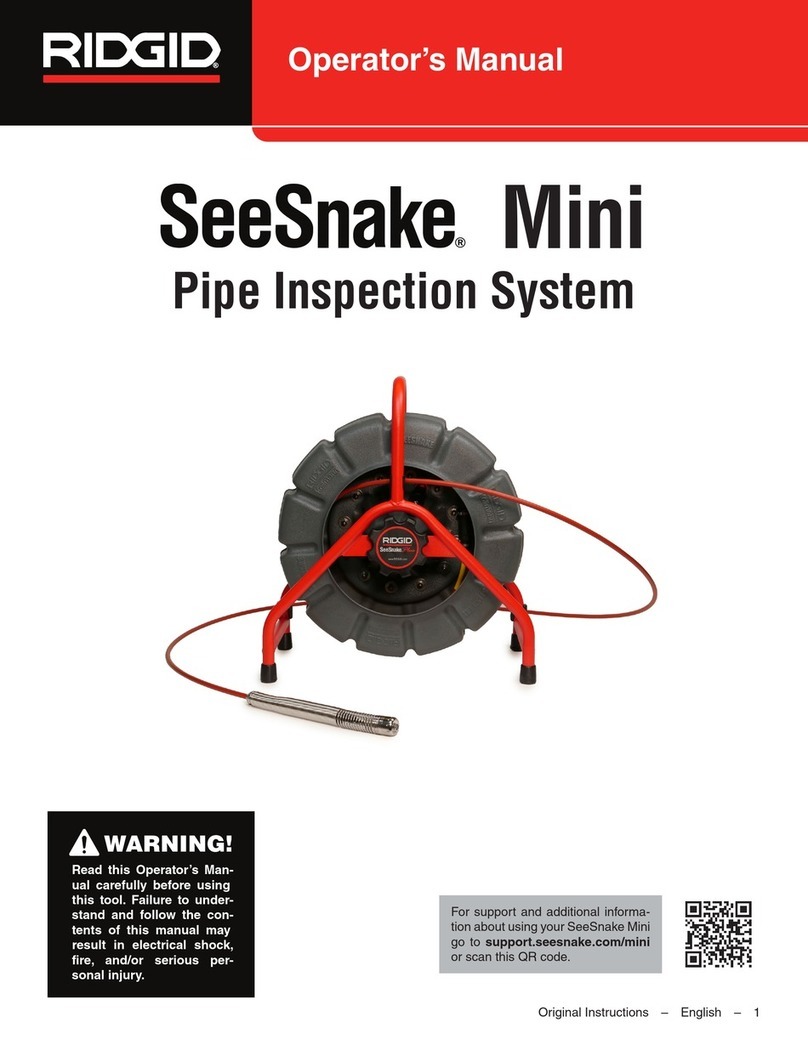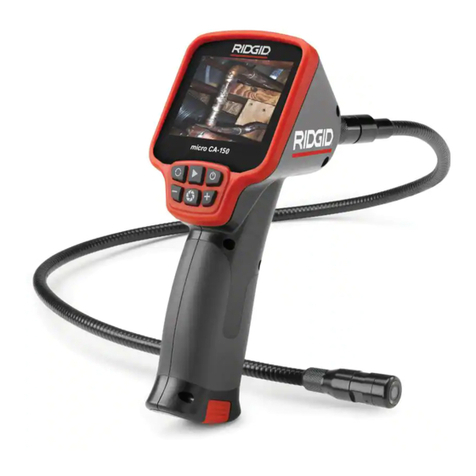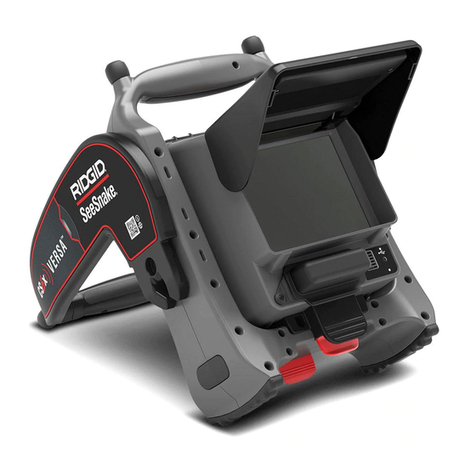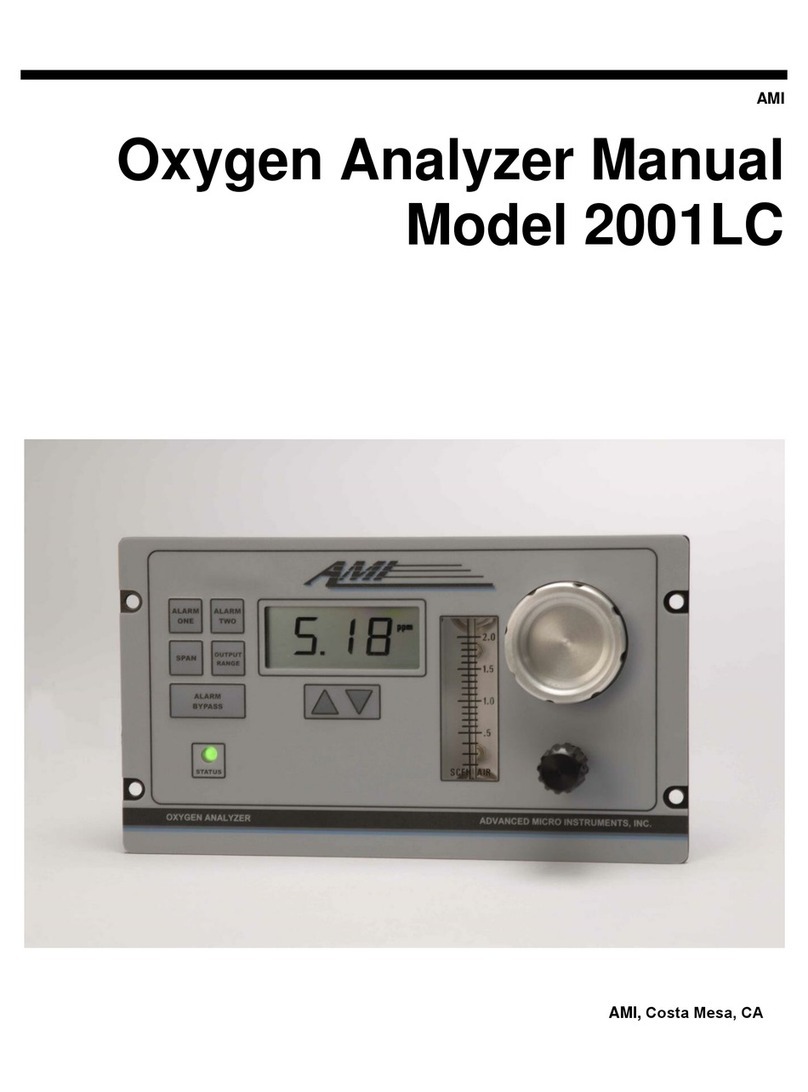
other. Shorting the battery terminals to-
gether may cause burns or a fire.
•Under abusive conditions, liquid may
be ejected from the battery; avoid con-
tact. If contact accidentally occurs, flush
with water. If liquid contacts eyes, addition-
ally seek medical help. Liquid ejected from
the battery may cause irritation or burns.
Service
•Have your equipment serviced by a
qual i fied repair person using on ly iden-
tical replacement parts. This will ensure
that the safety of the tool is maintained.
Specific Safety
Information
ARNING
This section contains important safety in-
formation that is specific to the inspec-
tion camera.
Read these precautions carefully before
using the RIDGID®micro CA-350 In spec -
tion Cam era to reduce the risk of electri-
cal shock or other serious injury.
SAVE THESE INSTRUCTIONS!
A manual holder is supplied in the carrying
case of the micro CA-350 Inspection Camera
to keep this manual with the tool for use by
the operator.
micro CA-350 Inspection
Camera Safety
•Do not expose the display unit to water
or rain. This increases the risk of electri-
cal shock. The micro CA-350 imager head
and ca ble are waterproof to 10' (3 m). The
hand-held display unit is not.
•Do not place the micro CA-350 Inspec -
tion Cam era anywhere that may con-
tain a live electrical charge. This in-
creases the risk of electrical shock.
•Do not place the micro CA-350 Inspec -
tion Cam era anywhere that may con-
tain moving parts. This increases the risk
of entanglement injuries.
•Do not use this device for personal in-
spection or medical use in any way.
This is not a medical device. This could
cause personal injury.
•Do not use equipment if the switch does
not turn it ON and OFF. Any tool that can-
not be controlled with the switch is dan-
gerous and must be repaired.
•Disconnect the batteries from the e quip -
ment before making any adjustments,
changing accessories, or storing. Such
preventive safety measures reduce the risk
of injury.
•Store idle equipment out of the reach of
children and do not allow persons unfa-
miliar with the equipment or these in-
structions to operate the equipment.
Equipment can be dangerous in the hands
of untrained users.
•aintain equipment. Check for missing
parts, breakage of parts and any other
condition that may affect the equipment’s
operation. If damaged, have the equip-
ment repaired before use. Many accidents
are caused by poorly maintained equip-
ment.
•Use the equipment and accessories in
accordance with these instructions,
taking into account the working condi-
tions and the work to be performed.
Use of the equipment for operations differ-
ent from those intended could result in a
hazardous situation.
•Use only accessories that are recom-
mended by the manufacturer for your
equipment. Accessories that may be suit-
able for one piece of equipment may be-
come hazardous when used with other
equipment.
•Keep handles dry and clean; free from
oil and grease. Allows for better control of
the equipment.
Battery Use & Care
•Recharge only with the charger speci-
fied by the manufacturer. A charger that is
suitable for one type of battery pack may
create a risk of fire when used with an-
other battery pack.
•Use equipment only with specifically
designated battery packs. Use of any
other battery packs may create a risk of
injury and fire.
•When a battery pack is not in use, keep
it away from other metal objects, like
paper clips, coins, keys, nails, screws or
other small metal objects that can make
a connection from one terminal to an-
3
icro CA-350 Inspection Ca era

